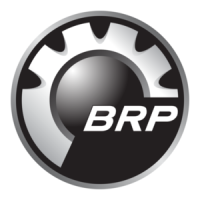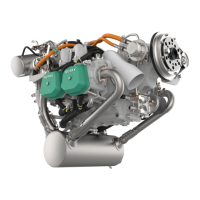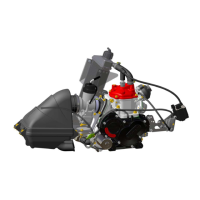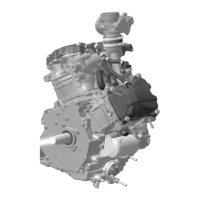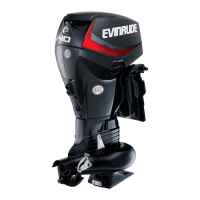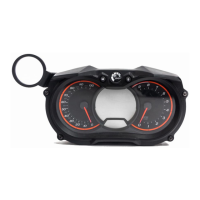
Do you have a question about the BRP Rotax 4-TEC 150 ECT and is the answer not in the manual?
| Displacement | 1494 cc |
|---|---|
| Bore | 100 mm |
| Power Output | 150 hp |
| Starter | Electric |
| Fuel System | Electronic Fuel Injection (EFI) |
| Cooling | Liquid-cooled |
| Max Power | 150 hp |
| Engine Type | Four-stroke, inline |
Explains the meaning of DANGER, WARNING, CAUTION, and NOTICE indicators.
States the guide prevents injury and damage, and should be used with other manuals.
Describes the information center as a cluster of gauges, lights, and a digital screen.
Covers text messages in multiple languages and metric/imperial units.
Mentions GPS, fault detection, and start-up validation.
Details the components and arrangement of the single-engine information center.
Details the components and arrangement of the dual-engine information center.
Explains the analog indication of engine revolutions per minute (RPM).
Describes the indication of speed in miles per hour (MPH) or kilometers per hour (km/h).
Explains their role in displaying functions, conditions, or system anomalies.
Details specific indicator lights (SYNC, LOW FUEL, etc.) and their descriptions.
Describes the bar gauge on the digital screen showing fuel amount.
Lists indications like engine(s), clock, fuel consumption, temperature, and boat speed.
Mentions its default state and use for SKI/CRUISE modes.
Indicates compass heading or scrolling messages and menu functions.
Notes compass availability depends on GPS antenna connection.
Warns against configuring while underway due to situational awareness loss.
Explains it shows water depth if equipped with a transducer and connected.
Mentions potential screen stoppage and refers to changing numerical display.
Warns against using the depth sounder in shallow water.
Continuously displays engine time in hours (Hr) for port and starboard engines.
Availability depends on GPS antenna and boat movement (above 5 km/h).
Shows cardinal points, azimuth, and requires GPS link with satellites.
Use as a guide only, not for navigation purposes.
Identifies Port (P) and Starboard (S) engines; not displayed on single-engine setups.
Lists DOCKING, SKI, CRUISE, ECO, DISPLAY, SETTINGS, FAULT CODES.
Explains pressing MODE and SET buttons for activation.
Mentions CAN Configuration Key modules enabling boat functions.
Step-by-step guide using MODE and SET buttons to change the clock.
How to navigate the DISPLAY menu using MODE and SET buttons.
Using UP/DOWN and SET to choose desired indications.
Explains abbreviations for units and time formats.
Visual overview of how to navigate through main menu options.
Detailed steps to engage the Docking Mode.
Detailed steps to cancel or exit the Docking Mode.
Allows adjusting launch intensity and target speed for different rider skill levels.
Details 5 acceleration curves and their corresponding speed ranges.
Step-by-step guide to activate the SKI Mode.
Steps to deactivate and exit the SKI Mode.
Visual guide to navigating and selecting options within Cruise Mode.
Uses iTC for steady speed/RPM to reduce fuel consumption.
Step-by-step guide to activate the ECO Mode.
Steps to disengage and exit the ECO Mode.
Visual guide to navigating and selecting display modes.
Fault code selection is only available if faults are active in the system.
Shows how to access fault codes and notes on check engine light.
Covers SYNCH MO, CHANGE BACKLIGHT LEVEL, CLOCK, and eREVERSE Override.
Notes on settings for Twin Engines and INR Equipped systems.
Covers NEUTRAL ADJUSTMENT, CHANGE BACKLIGHT LEVEL, and CLOCK.
Explains adjusting the neutral gate position for lateral movement.
Explains adjusting the display brightness level.
Explains enabling the reverse gate for maintenance purposes when the engine is OFF.
Explains adjusting lateral boat movement in idle condition.
Describes the adjustable window from +15 to -15 for neutral thrust.
